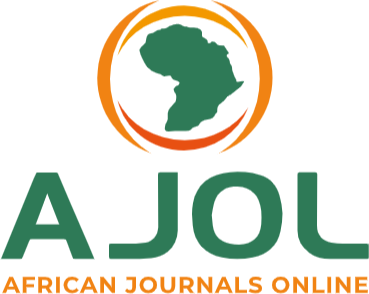Exploring the Thermoelectric Potential of Trigonal MgS2: A Computational Investigation Using DFT and Boltzmann Transport Theory
Keywords:
thermoelectric properties, chalcogenide, DFT calculations, BoltzTrap, Quantum EspressoAbstract
There has been a shift toward the development of cost-effective and environmentally friendly technologies, due to increased energy demand and attendant environmental degradations. Among these technologies, significant progress has been made in the field of thermoelectricity. Thermoelectric materials are recognized for their proficiency in converting waste heat energy into electricity, with their efficiency commonly assessed using the ZT (Fig. of merit) value.. This study investigates the thermoelectric properties of chalcogenide magnesium sulfide (MgS2), with trigonal lattice structure, using Density Functional Theory (DFT) in conjunction with the Boltzmann Transport Theory. The initial assessment of structural and thermoelectric properties employs the Generalized Gradient Approximation (GGA) based on the Perdew–Burke–Ernzerhof approximation (GGA-PBE).
The results indicate that the studied compounds exhibit characteristics of a p-type semiconductor. The structural confirmation of MgS2 reveals a trigonal configuration. The absolute value of the Seebeck coefficient demonstrates an increase with rising temperature across the measured range (100-400K). Simultaneously, the electrical conductivity exhibits a monotonically decreasing trend with increasing temperature, indicative of degenerating conduction behaviour. The power factor exhibits an upward trajectory with increasing temperature, consequently leading to an augmented dimensionless Fig. of merit ZT. The maximum ZT value observed for MgS2 is 0.057.
Similar Articles
- Ladidi M. Abu , Tiger Nut (Cyperus esculentus) Tuber: A Sustainable Resource for Industrial Starch: A Review , Communication In Physical Sciences: Vol. 11 No. 2 (2024): VOLUME 11 ISSUE 2
- Bayode Adeyanju, Development and Application of a Novel Bi-functional Heat Treatment Furnace: A Review , Communication In Physical Sciences: Vol. 12 No. 5 (2025): Vol 12 ISSUE 5
- Isah Haruna, Yahaya Zakari, Umar Kabir Abdullahi, Reuben Oluwabukunmi David, Jamilu Yunusa Falgore, On the Study of Kumaraswamy Reduced Kies Distribution: Properties and Applications , Communication In Physical Sciences: Vol. 12 No. 3 (2025): VOLUME 12 ISSUE 3
- Emmanuel Wilfred Okereke, Sunday Ngozi Gideon, Kingsley Uchendu, Statistical Properties and Application of Bagui-Liu-Zhang Distribution , Communication In Physical Sciences: Vol. 8 No. 3 (2022): VOLUME 8 ISSUE 3
- Richard Alexis Ukpe, Synthesis and Characterization of Calcium Oxide Nanoparticles (CaO-NPs) from Waste Oyster Shells , Communication In Physical Sciences: Vol. 10 No. 3 (2023): VOLUME 10 ISSUE 3 (2023-2024)
- Ola-Buraimo Abdulrazaq Olatunji, Umar Hamida, Geochemical Properties of Kalambaina Formation: Implication on Limestone and Marlstone Qualities for Industrial Uses, Sokoto Basin, Nigeria , Communication In Physical Sciences: Vol. 11 No. 4 (2024): VOLUME 11 ISSUE 4
- Sadiq Muhammed, Tukur Dahiru, Abubakar Yahaya, The Inverse Lomax Chen Distribution: Properties and Applications , Communication In Physical Sciences: Vol. 8 No. 3 (2022): VOLUME 8 ISSUE 3
- 1. Olowonefa Richard, 2. Auduson, Aaron Enechojo, Ologe Oluwatoyin, 4. Yusuf Odunsanwo , 5. Agbane Isaac Ojodomo, Geomechanical Characterization and In-Situ Stresses Analysis for Predicting CO₂ Storage Potential: A Case Study of Toba Field, Niger Delta , Communication In Physical Sciences: Vol. 12 No. 5 (2025): Vol 12 ISSUE 5
- Joy N. Egbucha, Eze C. Victor, Nlemchukwu N.C. Benjamin, Obikee M. Caroline, Joseph N. Aniezi, Ifeanyi E. Otuokere, Phytochemical, Anti-inflammatory, Antioxidant, Toxicity and Antimicrobial Activities of Sarcophrynium brachystachys (Benth) K. Shum Leaves , Communication In Physical Sciences: Vol. 11 No. 2 (2024): VOLUME 11 ISSUE 2
- Mercy Uwem Useh, Danlami Uzama, Patrick Obigwa, Effects of Abattoir Activities in the Surrounding Soils within Abuja, Nigeria , Communication In Physical Sciences: Vol. 8 No. 1 (2022): VOLUME 8 ISSUE 1
You may also start an advanced similarity search for this article.



